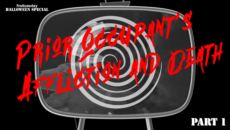This article presents the environmental conditions located on or in the vicinity of a property which adversely affect occupants of the property due to their injurious effect on the health or sensitivities of humans.
Noxious man-made hazards
Environmental hazards are noxious or annoying conditions which are man-made hazards, not natural hazards. As environmental hazards, the conditions are classified as either:
- injurious to the health of humans; or
- an interference with an individual’s sensitivities.
Further, environmental hazards are either located on the property or originate from sources located elsewhere which affect the occupant in his use and enjoyment of the property.
Environmental hazards located on the property that pose a direct health threat on occupants due to construction materials, the design of the construction, the soil or its location, include:
- asbestos-containing building materials and products used for insulation, fire protection and the strengthening of materials [Calif. Health and Safety Code §§25915 et seq.];
- formaldehyde used in the composition of construction materials [Calif. Civil Code §2079.7(a); Calif. Business and Professions Code §10084.1];
- radon gas concentrations in enclosed, unventilated spaces located within a building where the underlying rock contains uranium [CC §2079.7(a); Bus & P C §10084.1];
- hazardous waste from materials, products or substances which are toxic, corrosive, ignitable or reactive [Health & S C §25359.7; Bus & P C §10084.1];
- hazardous waste from the attempt to manufacture drugs [CC §1102.18];
- toxic mold [Health & S C §§26140, 26147];
- smoke from the combustion of materials, products, supplies or substances located on or within the building [Health & S C §§13113.7, 13113.8];
- security bars which might interfere with an occupant’s ability to exit a room in order to avoid another hazard, such as a fire [CC §1102.16; Health & S C §13113.9]; and
- lead.
Environmental hazards located off the property, but which have an adverse effect on the use of the property due to noise, vibrations, odors or some other ability to inflict harm, include:
- military ordnance sites within one mile of the property [CC §1102.15];
- industrial zoning in the neighborhood of the property [CC §1102.17];
- airport influence areas established by local airport land commissions [CC §§1103.4(c), 1353; Bus & P C §11010(b)(12)(B)]; and
- ground transportation arteries which include train tracks and major highways in close proximity to the property.
The effect on value and desirability
Environmental hazards have an adverse effect on a property’s value and desirability. Thus, they are considered defects which, if known, must be disclosed as material facts since the hazards might affect a prospective buyer’s decision to purchase the property.
The disclosure of a seller’s and listing agent’s knowledge of existing environmental hazards is required on the sale, exchange or lease of all types of property.
While the disclosure of environmental hazards is the obligation of the seller, it is the listing agent who has the agency duty of care and protection owed to his seller to place the seller in compliance with the environmental hazard disclosure requirements.
Further, and more critically, the listing agent also has an additional, but more limited, duty owed to prospective buyers of the listed property. The listing agent must personally conduct a visual inspection of the property for environmental hazards (and other physical defects), and do so with competence in order to advise prospective buyers of his observations and knowledge about conditions which constitute environmental hazards. [CC §2079]
To conclude the listing agent’s disclosure of environmental hazards and eliminate any further duty to advise the buyer about environmental hazards, the listing agent delivers, or confirms that the buyer’s agent has delivered, a copy of the environmental hazard booklet approved by the California Department of Health and Safety (DHS) to the prospective buyer. Delivery of the booklet is usually confirmed in writing by use of a provision in the purchase agreement. [See first tuesday Form 150 §11.5]
However, the listing agent might be subjected to an inquiry by either the prospective buyer or the buyer’s agent about environmental hazards on or about the property. Here, the listing agent is duty bound to respond fully and honestly to the inquiry.
Method of disclosure
The environmental hazard notice to be delivered to a buyer by a seller must be given in writing. No special form exists for giving the buyer notice of environmental hazards, as is provided for natural hazards. Until the real estate industry or the legislature develops one, the Transfer Disclosure Statement (TDS) and the purchase agreement are currently used as the vehicles for written delivery.
Some environmental hazards are the subject of provisions in the TDS, such as a direct reference to hazardous construction materials and waste, window security bars and release mechanisms, and an indirect reference to environmental noise. [See first tuesday Form 304 §§C(1), A and C(11)]
All other known environmental hazards can be separately itemized in the TDS. As for environmental hazards emanating from off-site locations, they can be disclosed through provisions in the purchase agreement. [See first tuesday Form 150 §11.6]
Editor’s note — The environmental hazard booklet is not a disclosure of known defects on the property. The booklet merely contains general information on a few environmental hazards, none of which might actually exist on the property. It is voluntarily delivered to the buyer by an agent, but with no legal mandate to do so.
Regardless of the vehicle of delivery, the seller is to give notice of environmental hazards to the prospective buyer as soon as practicable, meaning as soon as reasonably possible. As with the disclosure of natural hazards, the legislature intended for the disclosure of environmental hazards to ideally be made prior to entry into a purchase agreement. [Attorney General Opinion 01-406 (August 24, 2001)]
Need and motivation for disclosure
For the listing agent to properly anticipate the need to have the disclosures available to deliver to prospective buyers, the effort to promptly gather the information from the seller begins at the moment the listing is solicited and negotiated.
The seller and the listing agent have numerous good reasons to fully comply at the earliest moment with the environmental hazard disclosures, as well as all other property-related disclosures. The benefits of a full disclosure, upfront and before the seller accepts an offer or makes a counteroffer, include:
- the prevention of delays in closing;
- the avoidance of cancellations on discovery under contingencies;
- the elimination of having to renegotiate the price or offset corrective costs due to the listing agent’s dilatory disclosure or the buyer’s discovery during escrow;
- the shortening of the time needed for the buyer to complete his due diligence investigation; and
- control by the seller of remedial costs and responsibilities by terms included in the purchase agreement, not by later offsets or demands by the buyer or a court.
The listing agent needs to document in writing (for his file only) the agent’s inquiry of the seller about environmental hazards which are known or should be known to the seller. The list should itemize all the environmental hazards which might possibly exist on or about a property and the construction materials which contain them, the age or date of construction to elicit a review of probable hazardous construction material used at the time, and information known about the property on disclosures the seller received when he purchased the property or were brought to his attention on any renovation of the property.
Also, the listing agent’s inquiry into hazardous materials should precede the seller’s preparation of the TDS. Thus, the seller is mentally prepared to release information about his knowledge of defects in the condition of the property. Finally, the listing agent’s visual inspection should also be conducted before the seller prepares his TDS so his observations may be discussed.
The seller has no obligation to hire an expert to investigate and report on whether an environmental hazard is present on or about the property. The seller is also not obligated to remove, eliminate or mitigate an environmental hazard, unless he becomes obligated under the terms of his purchase agreement with the buyer.
It is the seller’s and his listing agent’s knowledge about the property which is disclosed on the TDS. The off-site environmental hazards that affect the use of the property are generally well known by the buyer’s agent for inclusion in the purchase agreement. If not included in the TDS or the purchase agreement, a counteroffer by the seller is necessary to disclose – as soon as practicable – the seller’s and the listing agent’s knowledge of environmental hazards located both on and off the property.
Asbestos in construction materials
Asbestos is any of a diverse variety of fibrous mineral silicates which are commercially mined from natural deposits in the earth. In the 1940’s manufacturers began mixing asbestos fibers with substances commonly used to produce materials for the construction of residential and nonresidential real estate improvements, such as cement, plastic, stucco, vinyl, insulation and felt roofing materials. Asbestos fibers added greater tensile strength, insulation qualities and fire protection to the construction materials which included them. [Health & S C §25925]
However, asbestos is a known carcinogen. As an occupant of a building continues to inhale asbestos fiber, he increases his risk of developing cancer of the stomach and chest lining (mesothelioma), asbestosis of the lungs, and lung cancer.
Construction materials which contain friable asbestos are those that can be crumbled, pulverized or reduced to powder by hand pressure when dry. Examples of friable material include:
- the acoustic popcorn in ceilings homes, apartments and offices;
- thermal insulation on pipes and hot water heaters;
- wall texturing compounds; and
- sheet rock joint compounds, called “mud.”
Construction materials which contain non-friable asbestos cannot be crushed by hand pressure. Examples of non-friable material include vinyl, asphalt or cement items, such as stucco plaster, vinyl tiles and asphalt roofing felts. Of course, on the removal of stucco or plaster, the asbestos may become friable since the material is disturbed and broken down for removal, creating particles which may become airborne and inhaled.
Asbestos is only harmful to humans when the fibers are inhaled and accumulate in the lungs producing, over time and with continuous exposure, an increased risk of cancer.
Thus, asbestos-containing material used in the construction of a building is best left undisturbed by avoiding renovation or demolition. If the material is in good condition (not crumbling or deteriorating), it is best to leave it in place when redecorating or renovating a property.
The seller of a property constructed with asbestos-containing building materials is under no obligation to investigate or have a survey conducted to determine the existence of friable or non-friable asbestos on the property.
Further, the seller is not obligated to remove or clean up any adverse asbestos condition. However, the condition must be disclosed. As a result, a prospective buyer may well condition the purchase of a property containing friable asbestos on its clean up and removal by the seller.
Asbestos fibers have not been used in molded thermal insulation material in spray applications for textured ceilings since 1978.
From 1940 to 1996, some homes were built with materials containing asbestos mixed with other components, such as vinyl floor tiles, backings for linoleum, HVAC duct wrapping, hot water pipe insulation, cement siding and pipes, stucco, plaster, asphalt roofing felts, ceiling and wall insulation, and taping compounds. Any removal of these components requires notification to the local air quality management district and the use of a registered contractor.
Formaldehyde gas emissions
Formaldehyde is a colorless, pungent gas contained in most organic solvents which are used in paints, plastics, resins, pressed-wood fiberboard materials, urea-formaldehyde foam insulation (UFFI), curtains and upholstery textiles. Gas emitted from these materials and products contains formaldehyde.
Formaldehyde is considered a probable carcinogen which is likely to cause cancer in humans who inhale the gas emitted by formaldehyde-containing material.
The use of UFFI occurred in construction during the 1970s and was banned in residential property constructed after 1982. However, formaldehyde emissions decrease over time. As a result, properties built during the 1970s and early 1980s with formaldehyde-containing materials give off levels of formaldehyde no greater than newly constructed homes. Over time, emissions decrease to undetectable levels. However, an increase in humidity and temperature will increase the level of emissions.
Radon gas in the soil
Radon is a naturally-occurring radioactive gas. It is not visible, cannot be tasted and has no odor. Detection is by instruments only. Radon gas is located in soils with a concentration of uranium in the rock, e.g., granite or shale, beneath it.
Radon is a known human carcinogen. The health risk for humans is lung cancer. For smokers, the risk of cancer is substantially increased by radon gas exposure.
Radon gas enters a building from the soil beneath the structure, be it a home, apartment building or nonresidential improvement. Cracks and openings for plumbing in concrete slabs and the porous nature of concrete block basement walls allow the gas from the soil to enter space at or below ground level. Thus, radon is rare in buildings of two or more floors in elevation, except for the ground floor and underground areas.
Radon is sucked into ground floor residential space by interior heating on cold weather days and the use of exhaust fans in the kitchen and bathrooms since these conditions create a vacuum within the lower area of the structure.
However, California residences rarely experience elevated and harmful levels of radon gas emission. Radon does appear in approximately one percent of housing in California. Proper ventilation avoids the build up of harmful concentrations of radon in a home or other enclosed space, a function of its design and operation.
Hazardous waste on site
Waste is hazardous if it has the potential to harm human health or the environment. Hazardous waste is released into the environment, primarily through the soil, from leaking underground storage tanks, drum containers, poorly contained landfills or ponds, accidental spills or illegal dumping.
Hazardous waste materials include any product, material or substance which are toxic, corrosive, ignitable or reactive, such as is generated by oil, gas, petrochemical and electronics industries, and dry cleaner and print shops.
Information is available to prospective buyers on their inquiry into the location and status of hazardous waste sites in the vicinity of a home from the “Cortese List” maintained by the California Environmental Protection Agency (EPA).
Mold is presently the vogue
Mold produces spores which become airborne. The spores are inhaled by humans who enter or occupy the space within the area generating the spores. There are many different kinds of spores, each having differing effects, if any, on humans. Some may be a mere annoyance, irritating the sensitivities of an individual. Others might be a threat to the health of those who inhale them.
The uncertainty of the toxic nature of mold spores has lead to a sort of intellectual moratorium on determining just what kinds of molds have an adverse or harmful effect on humans.
Sellers are under no obligation to investigate as to whether improvements contain molds. If it is known the structure does contain mold, the seller has no obligation to determine if the mold is a threat to human health.
The DHS has not yet set any standards for disclosures regarding the existence of mold. Guidelines for the remediation of mold threats and the approval and distribution of a consumer-oriented booklet on mold have also not yet been set by the DHS. Until they are produced, the prospective buyer will, at best, receive a writing from the seller and the listing agent in the form of a TDS advising the buyer of any awareness or knowledge the seller or the listing agent may have that mold exists on the property. No common knowledge exists for sellers or listing agents to visually distinguish between harmful and benign molds.
The DHS is expected to release these standards, guidelines and booklet on or after July 1, 2008 to inform prospective buyers about any harmful molds. These rules will set the permissible exposure limits for humans to various molds and identify those molds which pose a health threat to humans.
In any event, no compulsory investigation need be conducted by a seller into the presence of mold on his property. If the seller is aware of mold, regardless of type, he is to disclose his awareness of the mold’s existence, as well as any other reports or knowledge about the variety of mold he may have.
To produce mold standards, guidelines and the consumer-oriented booklet, the DHS must first assemble a panel of advisors as a task force to investigate, review and recommend the content of the standards, guidelines and booklet. But before assembling the task force, the program must be funded ($500,000 plus, and not yet available as of March 1, 2005).
The DHS anticipates that once the task force is selected, recommendations will not be forthcoming for two additional years. Then, the standards, guidelines and booklet produced by the task force must be adopted or approved by the DHS. When the DHS does finally act to adopt or approve the rules and booklet, they will not become effective for an additional six to 12 months. Thus, no disclosure based on guidance from the state will likely be available to brokers, agents and sellers to deliver to buyers until after July 1, 2008.



















Good article! We are linking to this great content on our website. Keep up the good writing.